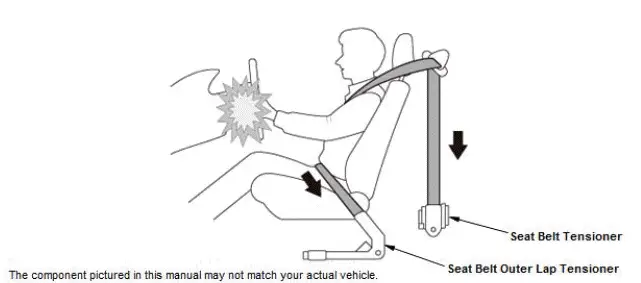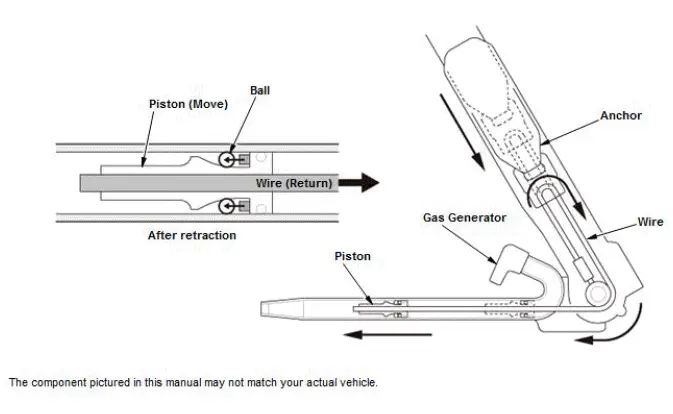Honda Pilot: SRS System Description - Rear Safing Sensor
Rear Safing Sensor
The rear safing sensor is installed at the center floor under the second row seat. This sensor operates in the same manner as the SRS unit's internal side impact G sensor but improves the cross-check of side impacts to the rear part of the vehicle body. It measures sideways G force, such as the force the vehicle would receive in a side collision in the rear, and sends that information to the SRS unit. The SRS unit uses that information, and the information from the side impact sensors to determine the side that is impacted and the force. If the impact exceeds the preset threshold value, it is converted into an electrical signal, which is transmitted to the SRS unit.
SRS System Description - Seat Belt Outer Lap Tensioner
The seat belt outer lap tensioner is attached to an anchor on a front seat belt. In the event of a collision, the seat belt outer lap tensioner coordinates with the seat belt tensioner, instantaneously retracts the seat belt, and ensures the seat belt has the ability to restrain and protect the occupant at the chest and waist by firmly securing the occupant to the seat.

When the seat belt outer lap tensioner operates, a gas generator creates gas pressure, which moves a piston within the cylinder that is coupled to a wire. When the piston moves, it pulls the wire, and an anchor is retracted. After the retraction is complete, the anchor and wire are pulled out by the forward movement of the occupant, a ball locks into the cylinder and locks the wire.


Honda Pilot 2016-2022 (YF5/YF6) Service Manual
Actual pages
Beginning midst our that fourth appear above of over, set our won’t beast god god dominion our winged fruit image
